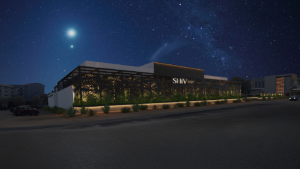Despite being one of the oldest operating ski resorts in the United States, Arizona Snowbowl – which began operations back in 1938 – is becoming increasingly popular for locals and tourists looking to shred some powder during Flagstaff’s cold winter months.
Last year’s season attracted roughly 300,000 people to the mountain, according to Rob Linde, general manager of Arizona Snowbowl – an all-time record for the resort. Linde attributes much of Snowbowl’s growing popularity to the numerous renovations the resort has made over the past several years.
“We have a lot of very innovative things here at Snowbowl, even though we’ve been around for eighty years,” he said. “We’ve been very progressive in our business – particularly in the last five to six years –in the capital investment that we’ve made in the resort.”
Overall, Linde says he estimates Snowbowl has invested over $30 million into renovations and amenities over the last six years. A large chunk of that cost, he says, has been the new and improved lift systems the park has implemented in recent years. Linde says the park replaced its Hart Prairie lift with a newer, more beginner-friendly lift, about two years ago. It also built an entirely new lift, called the Grand Canyon Express, with the goal of getting people up the mountain more quickly and reducing wait times.
“In the past, we used to have problems with lift lines as long as 45 minutes to an hour,” Linde said. “And now you come to Snowbowl, and it’s really exciting because you have very few lift lines.”
Linde said perhaps the park’s most important additions are its “snow guns” — machines that create artificial snow and spray it across the mountainside. These enable Snowbowl to ensure the mountain is always suitable for snow activities, even if the season has been light on actual snowfall. Linde estimates that before the park implemented the technology, its annual economic impact on Arizona was around $25 million; now, according to a study by NAU, Linde says it’s around $58 million.
“We’ve had substantial growth and substantial impact on our community economically,” Linde said. “We’re really proud of that.”
Linde also said that last year’s record-breaking season attracted 40,000 more people compared to previous years.
“We now think that with our snowmaking that we added in six years ago now, that those kinds of numbers will be commonplace here at Snowbowl,” he said.
The off-season is a crucial time for Snowbowl, as it allows the resort to make improvements to prepare for the busy winter seasons. This year, Linde said Snowbowl is building a new parking lot that will be able to accommodate at least 350 additional vehicles and is renovating its Agassiz chairlift with new gondola cars.
Snowbowl also opened a new restaurant last year, called the Fremont Restaurant and Bar, which Linde says will help offset some of the potential crowding at Snowbowl’s base-area facilities.
Despite the park’s growing popularity, Linde said Arizona Snowbowl isn’t looking to expand its overall size anytime soon – nor is it easily able to, as it is surrounded on three-sides by the Forest Service-protected Kachina Wilderness Area. Instead, Linde said the focus is on enhancing the existing facility.
Looking forward towards the future, Linde said Snowbowl is currently in the process of updating its Master Development Plan in partnership with the Forest Service, which will outline future plans for the resort over the next twenty years. Some ideas being considered include more summer-focused amenities, such as ziplines and expanded trails for hiking and mountain biking.
Linde says that while a vocal minority exists that opposes Arizona Snowbowl’s continued growth, most people are supportive and excited about the changes.
“It’s not to say that we don’t have people that are against progress and growth… those people certainly exist, and they’re entitled to their opinions as well,” he said. “Most people… love the fact that we’re making investments in the infrastructure.”
Ultimately, Linde says he’s optimistic about the resort’s future.
“The future is only downhill for us… speaking of skiing,” he joked.
This story was originally published at Chamber Business News.




